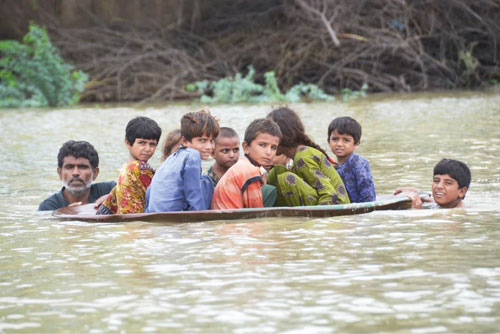More than four months after a national state of emergency was declared in Pakistan, up to 4 million children are still living near contaminated and stagnant flood waters, risking their survival and wellbeing, UNICEF warned on Monday.
Acute respiratory infections among children, a leading cause of child mortality worldwide, have skyrocketed in flood-stricken areas. In addition, the number of cases of children identified as suffering from severe acute malnutrition in flood-affected areas monitored by UNICEF nearly doubled between July and December as compared to 2021; an estimated 1.5 million children are still in need of lifesaving nutrition interventions.
“Children living in Pakistan’s flood-affected areas have been pushed to the brink,” said Abdullah Fadil, UNICEF Representative in Pakistan. “The rains may have ended, but the crisis for children has not. Nearly 10 million girls and boys are still in need of immediate, lifesaving support and are heading into a bitter winter without adequate shelter.
Severe acute malnutrition, respiratory and water-borne diseases coupled with the cold are putting millions of young lives at risk.” In Jacobabad, a southern district where many families have little more than mere cloth to cover their makeshift shelters by stagnant floodwaters, temperatures have dropped down to 7 degrees Celsius at night. In mountainous and high-altitude areas, which have also been affected by the floods, snow has fallen, and temperatures have dropped below 0 degrees Celsius.
UNICEF and partners have started providing items such as warm clothing kits, jackets, blankets and quilts, aiming to reach nearly 200,000
children, women and men. In response to the worsening child survival crisis, more than 800,000 children have been screened for malnutrition;
60,000 were identified as suffering from Severely Acute Malnutrition – a life-threatening condition where children are too thin for their height
– and referred for treatment with Ready-to-Use Therapeutic Food (RUTF).
UNICEF health interventions have reached nearly 1.5 million people with primary health care services so far, and 4.5 million children have been immunized against Polio in 16 flood-hit districts. UNICEF and partners have also provided more than one million people with access to safe drinking water, and one million with hygiene kits. In the months ahead, UNICEF will continue to respond to urgent humanitarian needs, while also restoring and rehabilitating existing health, water, sanitation and education facilities for families returning home.










